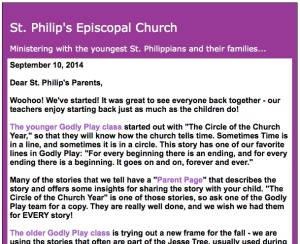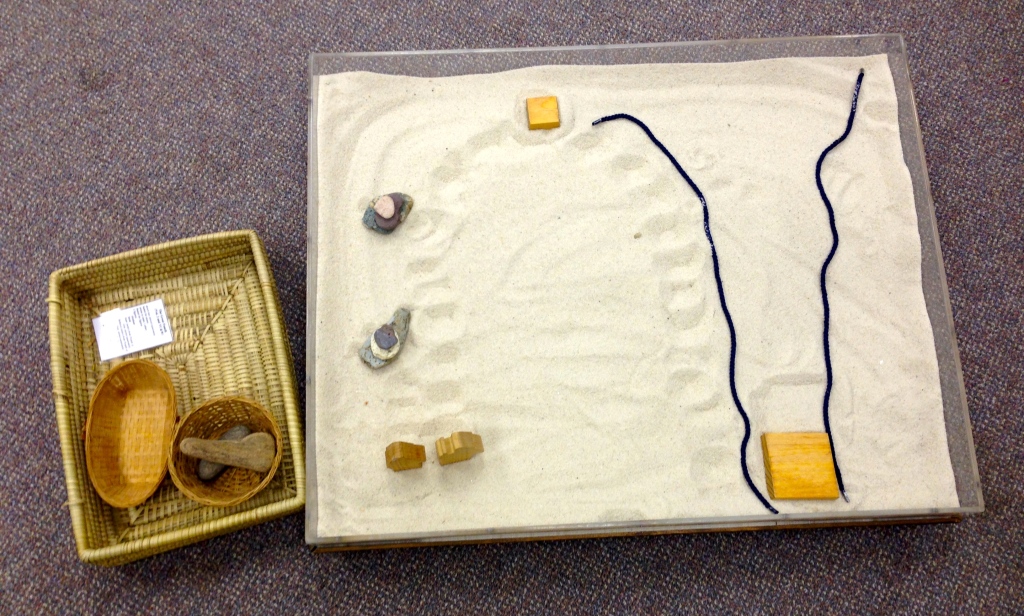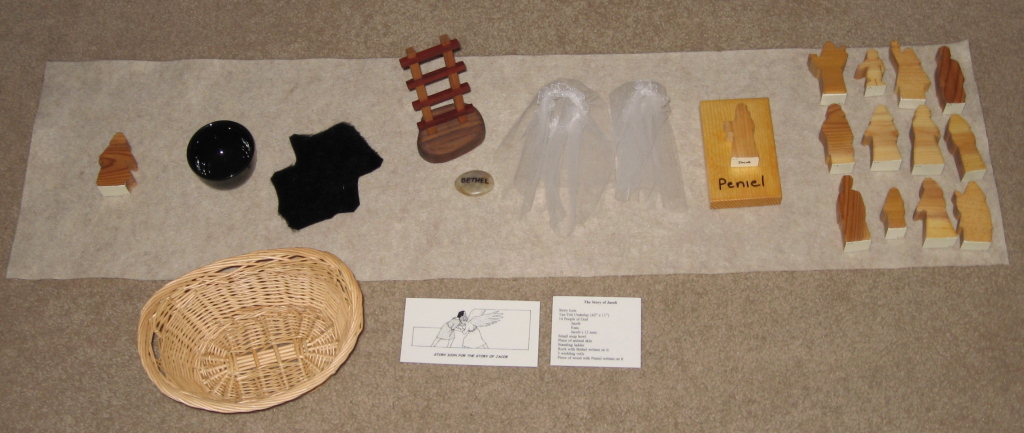 Each week we write a Constant Contact e-mail targeted to young families (and our elected vestry members! We’re sneaky that way…) At first we just listed upcoming schedule changes and that sort of thing, but we decided it was a good forum for opening a window into our classrooms for the parents. So each week I’d send a little e-mail off to the storytellers (we have two Godly Play classrooms) and ask what story they told, etc.
Each week we write a Constant Contact e-mail targeted to young families (and our elected vestry members! We’re sneaky that way…) At first we just listed upcoming schedule changes and that sort of thing, but we decided it was a good forum for opening a window into our classrooms for the parents. So each week I’d send a little e-mail off to the storytellers (we have two Godly Play classrooms) and ask what story they told, etc.
And each week I’d get a lovely paragraph back describing what happened that day! It’s really the best part of my week, and I am thankful that the storytellers are excited enough to write in such detail. These descriptions below are just as we send them. I edit them very slightly (to remove a child’s name or to edit out some housekeeping comment the storyteller might be sending my way) but otherwise they’re exactly as the storyteller reports. I hope you enjoy!
Last Sunday (10/5), here’s what happened:
The younger Godly Play class heard the story of The Great Family. Really? The best part of our week is receiving updates from the storytellers on how the class went!
Our story was The Great Family, or the story of Abraham and Sarah. It is a very important story and one thing that makes it so is the fact that it gives the kids a real sense of the desert box as a little bit of the desert. We “see” Abraham slipping out into the desert at night to be close to God. We realize how simple the desert is: “footsteps” are left in the sand by wooden figures and small stones are used to construct altars in thanksgiving that God is really there to meet Abram/Abraham wherever and whenever Abram/Abraham looks for God. (After months of watching walls being built of rocks in my yard, I am especially aware of the timeless physical satisfaction of putting rocks together toward a purpose.)
Another revelation of the story is how we are each a part of the Great Family. Abraham and Sarah really do eventually have as many children as there are stars in the sky or grains of sand in the desert. When the story shows us that from their one Isaac and his kind and courageous Rebecca come generations of children, leading at last to “your grandparents, and then your parents and now you,” the story gets very personal. When presented with the usual wondering questions, one child knew immediately where she was in the story–she was a grain of sand.
Although the preamble to this story includes some instruction about waiting until the right time to put hands into the desert box, I can relate too well to how hard the waiting is, and a few brief pokes and strokes to the sand go “unnoticed.”
Want to experience the story of the Great Family? Pull everyone up to computer and click here for a wonderful video.
The older Godly Play class continued hearing the stories that often are part of the Jesse Tree. With Jesse; we remember not only the family of Jesse, which begins a lineage that leads to Jesus, but the many people of the Hebrew scriptures who prepared God’s people for the coming of Jesus. Our storyteller reports:
We’re keeping it real here: due to the unusually cold weather or the alignment of the heavens, we had NO children show up for our class. Those outside the classroom may not realize that part of the storytelling technique in Godly Play is that the story is memorized – we learn the stories by heart, which (although we grumble on Saturday night) is a great place for the stories to end up – in our hearts.
So on a cold Sunday morning, we had two adults and an empty classroom, and a good story: the story of Jacob, the trickster. So we sat down and the storyteller told the story to the doorkeeper. These stories are not just for children – don’t be mistaken! We spent most of the Sunday School hour talking about nuances of the story: the Stranger tells Jacob that his name will become Israel because “he struggled with God and with man.” The wondering questions work just as well for adults as they do for children!


